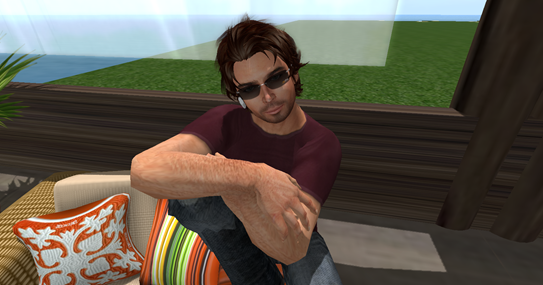
There has been a great deal of discussion recently concerning the merit of social media networks and their increasing insistence on “authentic” identity usage as of late. In example, we can see how something like Facebook or Google+ may be misinterpreting what it is that actually makes up an authentic identity in the digital age. I’ve written on this before in prior articles, but more under the auspices of the most extreme case of what would happen if the trend for “authentic” identities continued to persist, in that there is an increasingly higher probability that such will be challenged legally the more it is insisted upon.
When we talk about an identity that people most likely know us by, this name isn’t always a birth name, and this is why the idea of pseudonymous identity reigns supreme in the digital age. It is likely that many people around the world know us as our nicknames, handles or virtual avatar identities and really aren’t associating us with our real names – whether this is by default or by design is entirely up to circumstance and how we, as individuals, portray ourselves to different interest groups.
How we portray ourselves among different circles of influence can, and often does, vary wildly. In a business setting we may portray ourselves as an authentic identity, that is to say our real name (or root identity), but this is an exception to the rule in the digital age because quite often our root identities are accessible to only the closest of people such as family or very close friends or direct contact. This leaves us with the other 99% of the world with which we participate socially, and quite often these interactions are under a pseudonym.

In SecondLife we are free to engage under any pseudonymous representation we wish, and I believe this is a more realistic application of multiplicity of identity than what social media is providing today, with the exception of possibly Diaspora. While we can use our pseudonyms on Facebook, Google+ and others, it is not expressly permitted to do so, and the only reason people get away with it is simply a matter of hiding in a crowd. It is no wonder that those pseudonymous profiles are essentially on borrowed time, and should have no expectation of existing into the future.
I really do believe that this sort of social black-listing is not going to last too long, nor under most circumstances is it justified. There are plenty of legal reasons why a pseudonym is a perfectly acceptable alternative to a root identity, there are moral reasons, personal safety reasons, and even the reason that companies should be paying attention to the most – because it multiplies the population, and that is good for business. But most of all, the only reason that matters is simply because there is nothing you or I can do to actually stop the proliferation of distributed identity. That’s why so many pseudonyms exist as profiles on social media networks, despite their terms of service forbidding it. While it does give them the right to delete profiles and suspend services at will, this isn’t necessarily the correct path to the future.
As a counterpoint, I also happen to use Diaspora and actually believe that it represents a closer approximation of what needs to happen in technology and social media in order to appreciate and accommodate the multiplicity of identity, as well as what manner of control the individual should have over that identity. When I write about Google+ or Facebook, I like to point out that they do a lot of things correct, yet manage to foul up when it comes to the most important part of understanding the future of human identity, but with Diaspora, there seems to be an entirely different take on the matter.
I wrote a small snippet last year concerning Diaspora, entitled Why Diaspora Will Win that didn’t get much attention, but it did weigh out some of my thoughts about such a system and why I think that sort of model going forward is the best model for social media interaction. It is decentralized and focuses mainly on every conceivable manner by which you may control your identity, whether that means a pseudonym or a root identity is of little consequence to Diaspora because, and I believe this to be true, they are all the same and should be treated with equal weight.
The issue of human identity in a modern age is a complex topic, and I admit there is no easy answer. However, there are some very excellent signposts for this future which we can begin to really follow and understand going forward. To this end, I’d like to toss in a small section of a research paper that is currently unpublished, but describes the situation very concisely, taken from “The Distributed Self: Virtual Worlds and the Future of Human Identity”, by Richard L. Gilbert, PhD and Andrew Forney
The rise of 3D virtual worlds and the introduction of avatar-mediated forms of expression and interaction has the potential to once again reshape humanity’s conception and experience of the self and usher in a fourth stage of identity, one which can be termed “The Distributed Self” (Gilbert, Foss, & Murphy, in press). In this conception, consciousness and aspects of the self will be increasingly externalized and distributed into 3-dimensional digital forms (i.e. avatars) reflecting any number of combinations of age, gender, body type, race, ethnicity, style, personality, and physical health. Several studies have shown, for instance, that participants in 3D virtual environments such as Second Life often create avatars that, relative to their physical self, are younger, have a better body or physical appearance, and are ascribed a more positive or idealized personality (Au, 2007; Bessiere, Seay, & Kiesler, 2007; Gilbert, Foss, & Murphy, in press). Less frequently, they choose avatars with a different gender, ethnicity, or skin color (Wallace & Marryott, 2009, Duchenaut, Wen, Yee, & Wadley. 2009). Moreover, Gilbert, Foss, & Murphy (in press) estimate that among the overall user base of Second Life, 18% have a single “alt” (i.e. a secondary or alternative avatar) in addition to their primary avatar; 32% operate two or more alts; and that in approximately 70% of these cases one function of the alt or alts is to experiment with different aspects of identity or personality.
Taken as a whole these data indicate that about a half of active users of Second Life are coordinating a multiple personality system consisting of a physical self plus two virtual identities (a primary avatar and one alt) and about a third are coordinating an identity system involving 4 or more components (a physical self and three or more virtual identities). When the allocation of consciousness to non-immersive digital forms such as email, Facebook, Twitter, or Linked In is added to the physical and 3D virtual components of the overall identity system, the structure of the self becomes more like an organizational flowchart rather than the singular entity in modernist conceptions, or the diverse, but device constrained, model of post-modernism.
Multiplicity of Persona, or in this case manifest persona, is more like a conglomeration of multiple identities which comprise a single encompassing identity than a single root identity that ignores the digital pseudonyms as “fake”. It is this point that most social media outlets completely gloss over, and in fact insist erroneously that a root identity (birth name) is the only authentic identity that matters or exists. Unfortunately, this mentality of discounting the multiplicity of identity is incorrect and can be shown to be not just mildly inaccurate but wildly inaccurate for the assumption of the roles that digital identity will play in the future of social interaction.
The research paper is quite interesting to read, as it goes through all the phases of human identity over the course of generations leading up to this post-modern understanding of multiplicity. When it is published, I’ll see about getting permission to repost or link to it in full if anyone is interested.
Social Networks + Me
While there is a lot of issues concerning current social media networks, I do still use them. Unlike many, I have no issues with using my real name in public scenarios simply because I already am in the public limelight between my academic contributions, research, and interviews. This doesn’t mean that I am against the right to privacy or an individual’s right to withhold personally identifiable information in managing their own distributed self. If anything, this should be the very foundation of a social network – the right to choose which part of a persona we wish to put forward as our digital self.
It doesn’t matter if that digital self is a furry, robot, trans-gender, or adheres to ideals that are indistinguishable from what the root identity portrays. The simple fact of the matter is that they are all real people and should be treated as such – even if they require the basic right to privacy in using pseudonymous aspects of their distributed self.
As for me, I use Google+, Facebook, Twitter, and other social media networks under my root identity. Even in SecondLife, my Display Name is set as my real name and not a pseudonym. However, more people know me as Aeonix Aeon or Darian Knight than Will Burns, and in this light we can easily see how our distributed identities truly matter in the grand scheme of things.
Of course, I also have a Diaspora account, and if I had to weigh in concerning which social media network will reign supreme, it wouldn’t be Google+ or Facebook in the end… it’ll be something like Diaspora. I will say, however, that the social media system that Linden Lab is building seems to be getting at least some of the points made here – if only they would stop thinking like traditional social media networks and start thinking like something better from the future.
It’s a good start, nonetheless, and time will sort these issues of identity out.
For now, I embrace the distributed self model of thinking. To borrow a quote from Ferris Beuller:









Well written piece, thank you
ReplyDelete